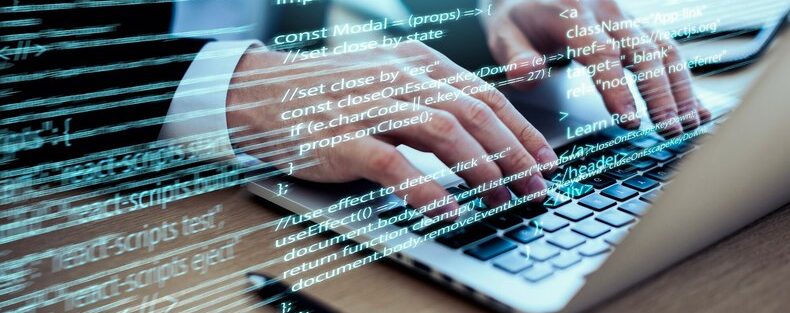Python and PHP are two titans in the world of programming. Each has carved out a unique niche, boasting loyal communities and diverse applications. While Python is often lauded for its simplicity and elegance, PHP holds strong as a powerhouse for web development. But what happens when things go awry? Error handling and debugging become crucial skills every developer needs to master.
Understanding how these languages tackle errors can make or break your coding experience. Whether you’re crafting intricate algorithms in Python or building dynamic websites with PHP, knowing how to handle mistakes efficiently can save you countless hours of frustration. Let’s dive into the nuances of error management in both languages, exploring their similarities, differences, and best practices along the way!
Comparison of Error Handling in Python and PHP
Error handling in Python is elegant and straightforward. It employs exceptions that allow developers to manage errors gracefully. When an error occurs, it raises an exception that can be caught using try-except blocks. This structure promotes a clear separation between normal code execution and error management.
PHP takes a different approach with its traditional error reporting system. While PHP also supports try-catch for exceptions, many developers still rely on older methods like the `error_reporting()` function to handle issues. This can lead to less consistency across applications.
Python’s use of built-in exceptions enhances readability and maintainability of code. In contrast, PHP’s flexibility allows programmers to choose their preferred method but may result in varied practices among projects.
Both languages have strengths in error handling, catering to different developer preferences and needs within their ecosystems.
Common Errors in both Languages
When diving into Python, one might stumble upon indentation errors. These occur when the code isn’t aligned correctly. Since Python relies heavily on whitespace, even a single misplaced space can throw off your entire script.
In PHP, one of the most frequent culprits is syntax errors. Forgetting a semicolon at the end of a statement can lead to frustrating debugging sessions. It’s easy to overlook such small details in larger scripts.
Type errors are another common issue in both languages. In Python, trying to concatenate strings with integers without conversion will raise an exception. Meanwhile, PHP might allow this but may yield unexpected results due to type juggling.
Uninitialized variables also plague developers using either language. Using a variable that hasn’t been set leads to runtime warnings in PHP and exceptions in Python, stalling progress and testing efforts alike. Each language has its quirks that developers must navigate carefully.
Debugging Techniques for Python and PHP
Debugging in Python often starts with using built-in tools like `pdb`, the Python debugger. You can set breakpoints and step through your code line by line. This method helps identify where things go wrong, making it easier to understand complex logic.
In PHP, tools like Xdebug provide similar functionality. It offers stack traces and variable dumping, which are invaluable for tracking down issues in real-time. You can even integrate it into IDEs for a smoother experience.
Another handy technique in both languages is logging. Using logging libraries lets you capture error messages without interrupting program flow. This approach also aids in monitoring application behavior over time.
Unit testing is another key strategy that shouldn’t be overlooked. Writing tests allows you to catch errors early on before they escalate into bigger problems down the road, improving overall code quality and reliability as a result.
Advantages and Disadvantages of Error Handling in each Language
Python’s error handling is often praised for its clarity. The use of exceptions encourages developers to write cleaner, more readable code. This structured approach allows issues to be caught and handled gracefully.
However, Python’s dynamic typing can lead to runtime errors that are sometimes difficult to trace. If a developer overlooks a potential exception, it may result in unexpected behavior during execution.
On the other hand, PHP offers a more lenient error handling system with its traditional approach using error codes and warnings. Many developers find this flexibility useful when building applications quickly.
Yet, this same flexibility can lead to neglected errors if not managed carefully. Poorly handled errors in PHP might cause silent failures or security vulnerabilities that could compromise an application’s integrity.
Both languages have their strengths and weaknesses, making them suitable for different types of projects depending on specific requirements.
Conclusion
When it comes to error handling and debugging, both Python and PHP offer distinct advantages and challenges. Python’s approach is often lauded for its simplicity and readability, making it easier for beginners to grasp the essentials of error management. The clear syntax allows developers to write code that’s not only functional but also easy to maintain.
On the other hand, PHP has made significant strides in recent years regarding error handling capabilities. Its integration with web applications means that understanding how errors manifest in a browser context is crucial for many developers. While traditional methods may seem cumbersome at times, modern practices like exception handling have improved significantly.
Understanding common errors across both languages can empower programmers to troubleshoot effectively. Whether it’s dealing with syntax issues or runtime exceptions, knowing what pitfalls exist helps streamline development processes.
Debugging techniques vary between the two as well. With tools like PDB for Python or Xdebug for PHP, developers can gain insights into their code’s behavior during execution—allowing them to identify problems quickly.
Each language presents unique strengths when addressing errors and debugging processes. Choosing one over the other will depend on specific project needs and personal preferences. Mastering these skills enhances your programming toolkit regardless of which language you prefer.

